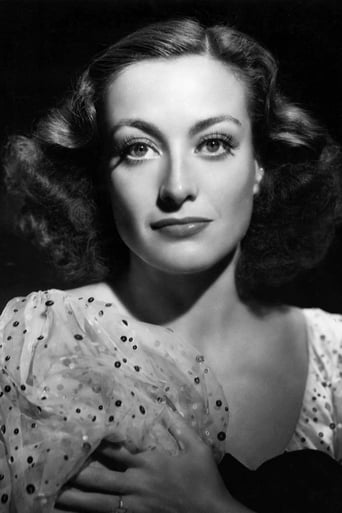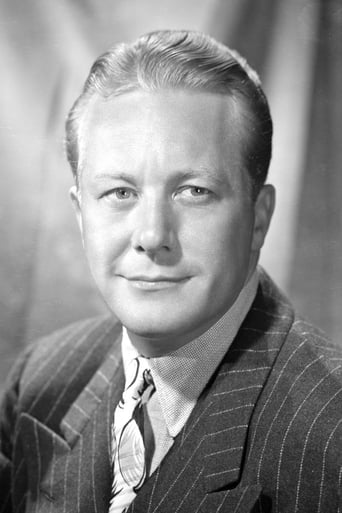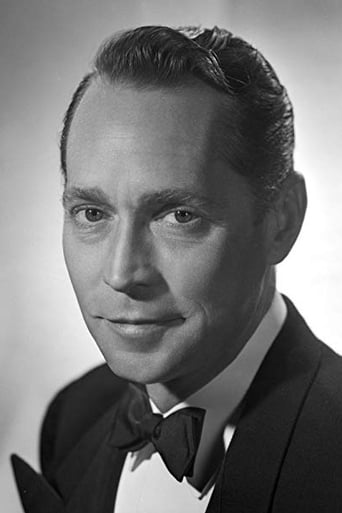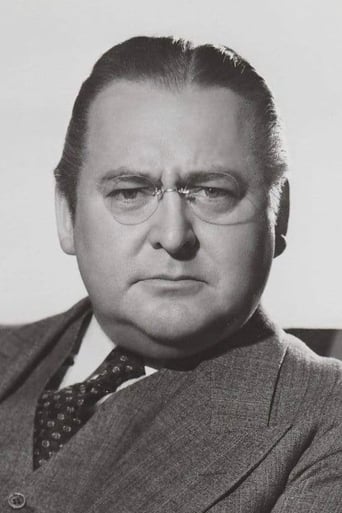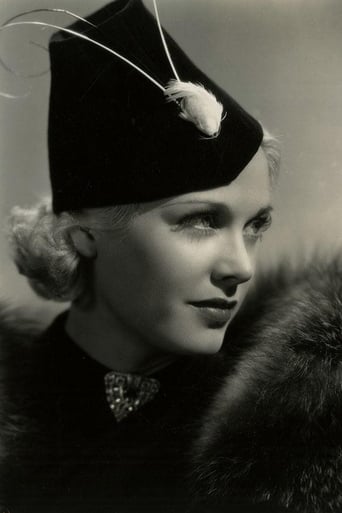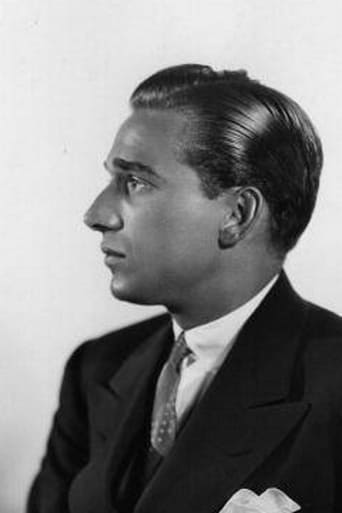Marketic
It's no definitive masterpiece but it's damn close.
Moustroll
Good movie but grossly overrated
Sexyloutak
Absolutely the worst movie.
Freeman
This film is so real. It treats its characters with so much care and sensitivity.
bkoganbing
I'd have to describe Sadie McKee as both the typical Joan Crawford vehicle and the typical Franchot Tone vehicle. The two of them who were husband and wife when the film was made are perfectly cast in roles that typified their images in the Thirties.Crawford is the daughter of a cook on the sumptuous palatial Long Island estate where Tone is the young heir and a lawyer by trade. To earn a few extra bucks Crawford occasionally helps mom out serving at formal meals.At one of those meals she hears Tone disparaging her sweetheart Gene Raymond who was caught in a petty theft. Tone makes a big point in saying we can't give people like these help because they're no good. Crawford throws a fit and runs to Raymond.She almost marries Raymond, but he runs out on her for Esther Ralston. In New York working as a nightclub cigarette girl she runs into Edward Arnold who is a millionaire with a severe drinking problem. No doubt caused by drinking a lot of rotgut liquor during recently repealed Prohibition. And wouldn't you know it, Tone is his lawyer.So Sadie has her three men, give you one guess who she winds up with in the end. You'd probably guess right, but let's say it's a character altering experience for all.Sadie McKee is probably a good example of the Joan Crawford shop girl before she became a hardened creature like Crystal Allen in The Women. As for Franchot Tone, MGM just loved casting him as rich men in a tuxedo, probably because he looked so darn good in them. The only way either of them escaped type casting was as they got older they varied their parts due to age. Crawford was ever the film star, even in some of the horror flicks she did in the sixties. Tone went right into television and worked steady right up to his death.Sadie McKee however is a good opportunity to see them both young and at the height of their fame. Also note the Nacio Herb Brown-Arthur Freed ballad All I Do Is Dream Of You comes from Sadie McKee.
rogerneon
Another poster has mentioned that this film was released a couple of months before the Hayes Code was being strictly enforced. Nevertheless it has to go through some amazing "story gymnastics" to get several points across.I don't want to spoil the story for anyone, but observe the incredibly indirect way Sadie's friend has to ask if she is sleeping with her wealthy husband, and the almost as indirect answer Sadie gives. Perhaps even this much wouldn't have been allowed under full enforcement of the Hayes Code.Alcoholism was another touchy subject. It's very clear that Sadie's husband is an alcoholic, but the words "alcoholism" is never used; the disease is simply called "it," and you have to infer what "it" is from the surrounding material.I'm trying to not give too much of the story away, but another rule movie makers had to follow was that divorced people aren't supposed to be happy. So what to do after Sadie and her wealthy husband are amicably divorced? For the answer, I guess people will have to watch the movie!
Poseidon-3
It's easy to see why films like this made Crawford the idol of millions of young women across the country. It's the epitome of a "vehicle".....a film designed to display all the talents of a star and make audiences fall for them. As in many of her early films, she begins at the bottom...the daughter of the cook for a wealthy family including Tone. She gets a hot scene right off the bat when she angrily defends her boyfriend, who is being derided by the aristocrats at the table, by telling them all off (this moment actually brings to mind Emily Watson's similar, yet much more subdued, scene in "Gosford Park".) Soon she and lover Raymond are off to NYC. This section is fascinating as it portrays the way diners were in that era. There's an astonishing coffee dispenser that is shown in one scene and the Automat is quite interesting to behold (not to mention the corned beef hash and 2 poached eggs for $0.35!) Circumstances progress to where she is working in a dance hall (and showing some positively scary legs! It amazing how times have changed in that, today, a similar dancer would have to have sticks for legs and breasts out to there, etc....) Here she becomes associated with a drunken millionaire (Arnold) who takes a major shine to her. Fortunately, for the viewer, she sticks with him, so she can wear an array of dazzling Adrien gowns and furs. Ultimately, each of the men in her life (Tone, Raymond, Arnold) presents her with a variety of conflicts and decisions....all of which she handles with the utmost nobility and grace. She is photographed magnificently throughout with her amazing profile and luminescent eyes featured repeatedly. It's a good thing the film is in black and white because she'd be too much to deal with in color! Everyone knows that Hurrell retouched his amazing portraits of her, but here she looks quite wonderful with just make up and good lighting. The plot is creaky and contrived and the film is just plain out of date, but it's great to see Joan in action in her quintessential role and there's a decent performance from Arnold and nice work by several other supporting players including Hitchcock favorite Carroll. One fun thing to watch for: As a precursor of the later, more antagonistic Crawford, Joan gets fed up with a nightclub singer, barks at her to "Shut up!" and shoves her backwards into a trunk! Fun stuff.
Arthur Hausner
I liked this fine melodrama despite Joan Crawford and Gene Raymond not being among my favorite actors. Crawford's mother (Helen Ware) is a servant in Franchot Tone's household, and she is also a maid, but has to leave after she berates Tone in front of all the dinner guests for bad mouthing Raymond, who was caught stealing. She leaves with Raymond for New York City where they hope to start a new life together, intending to marry the next day. Love, apparently, has no boundaries. They find a cheap rooming house after befriending showgirl Jean Dixon and get a room where she lives. This film was released less than two months before the Production Code was strictly enforced, after which you would never see an unmarried couple sharing the same room. The scene fades to black after they kiss passionately. Of course, while Crawford is looking for a job, Raymond is enticed by singer Esther Ralston to join her act, so he never meets her at the marriage license bureau as planned. Eventually, Crawford meets and marries multi-millionaire Edward Arnold, an alcoholic to end all alcoholics. In a 1948 interview, Arnold said this was his favorite role to that date. I can't fault his acting, but his character was very irritating. Even alcoholics have periods where they are not so pie-eyed they can't walk without staggering. Meanwhile, Tone, who is Arnold's lawyer, thinks Crawford married Arnold for his money and knows she still carries the torch for Raymond, and Tone despises her for it. She admits she didn't love Arnold and it was a marriage of convenience. But when she cures Arnold of his alcoholism, Tone has a newfound respect for her. So when Crawford learns Raymond was dumped by Ralston, and she tells Arnold of her love for Raymond and asks him for a divorce, presumably without a settlement, she asks Tone to help her find Raymond, which he does. He's ill with tuberculosis, so Tone pays to get the best doctors to try to cure him.The film is entertaining despite little of it ringing true. The way Crawford behaved at times, I expected to see a halo over her head, so Crawford fans should love the film. It also helps to know that Crawford and Tone were married in real-life the year after this film was released. There is some pleasure from the music on the soundtrack, including the very popular songs "All I Do is Dream of You" and "After You've Gone," the latter performed in a jazzy version by Candy Candido and Gene Austin. I would have liked more comedy relief, since I didn't think Arnold's actions were particularly funny. The one scene that made me laugh involved two motorcycle cops and a taxi driver, and a tip that Crawford tries to give the cops for bringing the passed-out Arnold home. Otherwise, I never even cracked a smile.

